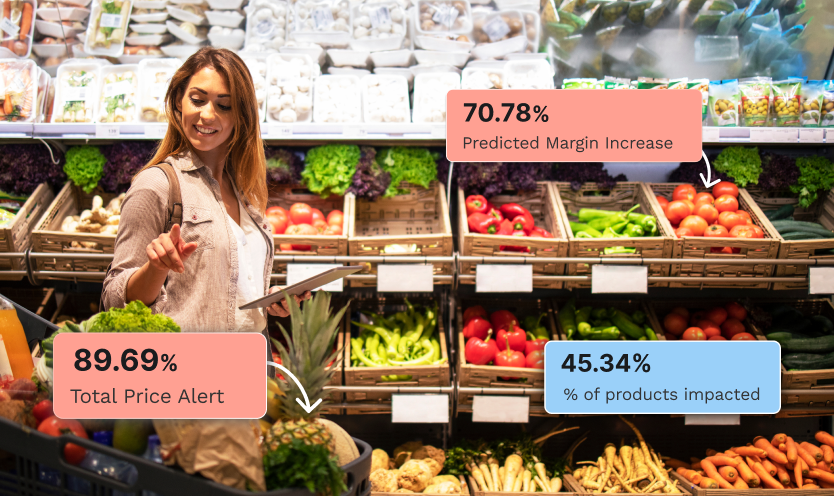How New Tariffs Are Disrupting the U.S. Apparel Industry
How New Tariffs Are Disrupting the U.S. Apparel Industry
The U.S. apparel industry is grappling with a fresh wave of tariff increases that are pushing up costs across clothing, footwear, and accessories. These tariffs, aimed at imports from key manufacturing hubs like China, Vietnam, and Bangladesh, are squeezing retailers and manufacturers alike—leading to higher consumer prices and margin pressure across the board.
.png?width=730&height=251&name=Frame%202%20(1).png)
Steep Tariff Hikes Across Apparel Categories
Clothing
The import tariff rate on apparel has jumped from 14.5% in 2024 to 30.6% in 2025, nearly doubling the cost burden on U.S. retailers. This increase affects everything from fast fashion to premium brands, forcing companies to either absorb the costs or pass them on to consumers.
Footwear
The tariffs on footwear imports have increased by 25%, hitting both everyday shoes and high-performance sneakers. Brands that rely heavily on Asian manufacturing—such as Nike, Adidas, and Puma—are already seeing stock prices dip as investors brace for supply chain disruptions.
Accessories
Luxury and everyday accessories—including handbags, belts, and jewelry—are now facing tariffs of up to 20%, making these items significantly more expensive for U.S. consumers. Major brands in the luxury space, like Coach and Michael Kors, are adjusting pricing strategies to stay competitive.
Retailers' Response: Freezing Hiring, Delaying Orders
Retailers are delaying inventory purchases and freezing hiring in an effort to curb financial strain. Small and mid-sized apparel brands, which lack the scale of giants like Walmart or Target, are particularly vulnerable to these rising costs. Many are exploring alternative sourcing strategies, though shifting production takes time and investment.
At the same time, the closure of the “de minimis” exemption, which previously allowed duty-free imports under $800, is hitting e-commerce giants like Shein and Temu. This change means that affordable, direct-to-consumer imports from China are now subject to full tariff rates, pushing up prices even further. This may be a boon in disguise for US based small to mid-sized brands focused on women’s apparel and kids clothing.
How Hypersonix Can Help Apparel Brands Adapt
With rising costs and shrinking margins, apparel retailers must make smarter, data-driven decisions to stay competitive.
Competitor AI: Staying Ahead in a Volatile Market
Understanding what competitors are doing is critical in a high-cost environment. Hypersonix’s Competitor AI provides:
- Competitive price monitoring: Tracks how rival brands are adjusting their pricing in response to tariff hikes.
- Market intelligence: Identifies gaps and opportunities in pricing strategy, ensuring retailers don’t fall behind.
- Dynamic benchmarking: Helps retailers compare their pricing against competitors in real-time, allowing for more agile decision-making.
.png?width=586&height=355&name=Frame%205%20(4).png)
Pricing AI: Finding the Sweet Spot Between Profitability & Affordability
Higher costs don’t have to mean lost customers. Hypersonix’s Pricing AI enables apparel brands to:
- Optimize price points: Uses AI-driven insights to determine the best pricing strategy that balances margin protection with customer retention.
- Predict demand elasticity: Helps retailers understand how much of a price increase customers are willing to absorb before sales drop off.
- Automate dynamic pricing: Adjusts prices in real-time based on competitor activity, demand shifts, and cost fluctuations.
Promo AI: Smarter Discounts Without Destroying Margins
Running effective promotions is key to keeping customers engaged without giving away too much profit. Promo AI supports retailers by:
- Identifying demand trends: Predicts which categories will see the biggest impact from price hikes, allowing retailers to adjust markdown strategies proactively.
- Smart discounting: Recommends strategic discounts that maintain margins while still attracting customers.
- Competitor insights: Tracking pricing moves by rivals in real time, so brands can react faster and avoid unnecessary price wars.

.png?width=730&height=68&name=CS_Learn%20More%20(4).png)





